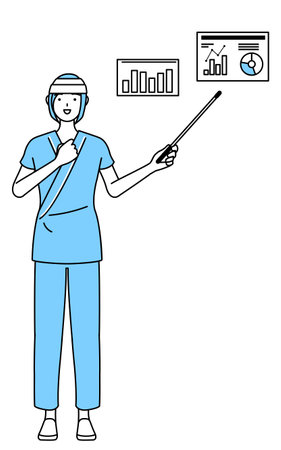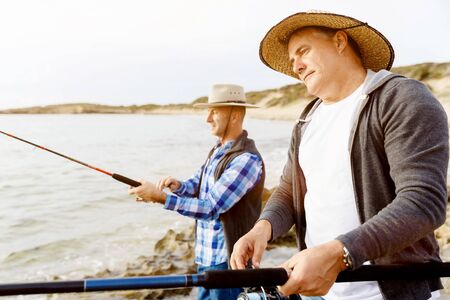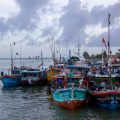1. Setting the Scene: The Hidden Currents of Indian Fisheries
As the sun rises over the misty waters of Kerala’s backwaters and glimmers through the tangled mangroves of Bengal’s Sundarbans, a quiet world awakens—one often overlooked in India’s grand economic narrative. The Indian fisheries sector, cradled within these diverse landscapes, has for generations been woven into the fabric of rural life. Here, families have cast their nets long before the first city lights flickered on, drawing sustenance and tradition from rivers, estuaries, and coastal stretches. Yet, despite its ancient roots and the vital role it plays in feeding millions, fisheries have remained in the shadows—marginalised in policy and perception alike. From the pearl-like lagoons of Tamil Nadu to the bustling fish markets along Maharashtra’s coast, each region sings its own song of resilience and resourcefulness. While India is blessed with immense aquatic riches—from freshwater lakes to sprawling deltas—the stories of those who depend on these waters are rarely told beyond their villages. This unsung world is not only an economic backbone for countless rural households but also a keeper of unique cultural practices that ebb and flow with every tide.
2. Meet the Young Leader: Charting a New Course
Born in a small coastal village near Visakhapatnam, Arjun Shekhar grew up with the scent of the sea and the rhythm of fishing boats shaping his childhood dreams. His family, part of the traditional fisherfolk community, often gathered under the banyan tree to share stories about changing tides and shrinking catches. Inspired by these tales, Arjun always felt a deep connection to his roots, yet he looked at the world through a lens sharpened by modern education.
Arjun’s journey from local shores to national platforms began when he secured a scholarship to study Marine Biology at IIT Madras. There, he quickly realised that scientific knowledge alone wasn’t enough—the wisdom passed down from elders held treasures for sustainable fisheries. Combining classroom insights with grassroots experiences, Arjun became a bridge between old and new, blending tradition and innovation to uplift India’s marginalized fishing communities.
Blending Roots and Modernity
| Traditional Wisdom | Modern Education |
|---|---|
| Eco-friendly fishing methods learned from elders | Scientific resource management techniques |
| Respect for seasonal cycles and marine biodiversity | Data-driven monitoring and policy advocacy |
| Community-based conflict resolution | Networking with government and NGOs |
The Spark of Motivation
Arjun’s motivation springs from witnessing the everyday struggles of his family and neighbours—unpredictable incomes, climate threats, and outdated regulations. He believes every boat on the horizon tells a story worth hearing. “Why should our voices be lost in translation?” he often asks during village meetings, inspiring young people to see themselves as stewards of both heritage and progress.
A Holistic Vision for Fisheries in India
Through his work, Arjun champions an inclusive vision where traditional knowledge is valued alongside scientific advances. He fosters dialogue between policymakers and fishermen, ensuring their lived realities shape decisions at every level. For him, bringing fisheries into India’s mainstream is not just about livelihood—it’s about dignity, pride, and hope for generations to come.

3. Challenges Along the Ghats: Breaking Barriers in the Blue Economy
If you have ever strolled along the ghats of Varanasi or wandered through the bustling fish markets of Kochi, you’ll know that India’s fisheries are as lively as a monsoon river. Yet, for generations, this vibrant sector has been swimming against strong currents—both seen and unseen. Let’s dive into the world where cultural perceptions, infrastructural hardships, and economic constraints have kept fisheries at the margins of mainstream development in India.
Cultural Currents: Perceptions That Shape Lives
Historically, fishing communities—often referred to as ‘machhuaars’—have found themselves on the periphery of social acceptance. Deep-rooted caste dynamics and traditional notions about livelihoods have meant that fishers are sometimes looked down upon, their skills undervalued despite their vital role in food security. For many young leaders from these communities, changing mindsets is as challenging as navigating a choppy river during storm season.
Navigating Infrastructural Rapids
Infrastructure (or the lack thereof) has long cast a shadow over the fisheries sector. Many villages by the sea or riverside remain cut off from good roads, cold storage facilities, and modern harbours. Without proper infrastructure, fishers face post-harvest losses that eat into already thin margins, making it tough for families to escape cycles of hardship. It’s a reality where every kilo of lost fish represents more than just missed income—it’s a setback for dreams and aspirations.
The Tight Net of Economic Constraints
Access to finance is another knotty problem. Banks and lending institutions often hesitate to extend credit to small-scale fishers who lack collateral or formal documentation. As a result, many turn to local moneylenders with sky-high interest rates, trapping them in debt cycles that span generations. The sector’s informal nature also means limited access to government welfare schemes and insurance cover—a gap that only persistent advocacy can bridge.
Despite these swirling challenges, young leaders with salt in their veins and hope in their hearts are refusing to be swept away by the tide. They are charting new courses, breaking old barriers, and steadily paddling towards a future where fisheries take centre stage in India’s blue economy narrative.
4. Innovative Initiatives: From Tech to Tradition
If you think Indian fisheries are just about nets and boats, think again! Today, the wave of innovation is rolling through our coastal villages and riverine hamlets, bringing new hope and transforming lives. Our young leader has been right at the helm of this change, championing projects that blend technology with tradition, and empowering those whose voices were often lost in the tide.
Digital Fish Markets: Bridging the Gap
Imagine buying your favourite Rohu or Pomfret with a tap on your phone—this is no longer just a city dweller’s dream! With digital fish market platforms sprouting in states like Andhra Pradesh and Kerala, fisherfolk can now connect directly with buyers, reducing middlemen woes and ensuring fair prices. These platforms offer live updates on catch availability, price transparency, and even doorstep delivery for customers.
| Initiative | Location | Impact |
|---|---|---|
| MatsyaMitra App | Karnataka | Increased income by 20% for small fishers |
| DigiFish Marketplace | Kerala & Tamil Nadu | Expanded market access to urban consumers |
Women’s SHGs: Sisters in Success
No story about Indian fisheries is complete without acknowledging the power of women. Through Self Help Groups (SHGs), women from fishing families are coming together to process, package, and even export seafood products. From dried fish pickles to ready-to-cook marinated prawns, these groups are not only adding value but also carving their own entrepreneurial space.
Key Achievements of Women’s SHGs:
- Secured micro-loans from local banks for business expansion.
- Trained over 1,000 women in sustainable fish processing techniques.
- Brought traditional recipes to national food festivals.
Startups Making Waves: Local Stories, Big Impact
The startup spirit is alive in India’s fishing sector. Young entrepreneurs are collaborating with communities to introduce cold chain solutions, mobile payment systems, and eco-friendly packaging. Take the story of ‘BlueBay Innovations’ in Odisha—a team of fresh graduates who designed solar-powered ice boxes for inland fishers, drastically reducing spoilage and increasing profits.
| Startup Name | Innovation | Community Benefit |
|---|---|---|
| BlueBay Innovations | Solar-powered ice boxes | Reduced post-harvest loss by 30% |
| Matsyakranti Pvt Ltd. | Mobile payments for fisherfolk | Simplified transactions & boosted savings habits |
The Ripple Effect: Mainstream Visibility
Together, these innovative initiatives are not just changing livelihoods—they’re rewriting the story of Indian fisheries. The mainstream is finally tuning into tales from our coasts and riversides. And as more partnerships blossom between techies, traditionalists, women leaders, and grassroots startups, the current of change will only grow stronger—one idea at a time.
Ripples of Change: Impact on Local Communities
In the tranquil rhythm of dawn, when fishermen in coastal Kerala untangle their nets and riverfolk in Assam set out in bamboo boats, the stories of change are quietly unfolding. The journey of our young leader is stitched together by these voices—from briny shores to meandering rivers—each echoing a newfound hope. Where once livelihoods were tangled with uncertainty, now there’s a gentle but persistent optimism. In villages like Gopalpur, women gather under the shade of coconut trees, sharing how access to sustainable aquaculture training has not only boosted their family income but also sparked small dreams for their children’s futures. “Earlier, we saw fish as food; now, we see it as our future,” smiles Rekha, her hands busy weaving baskets for the day’s catch.
Reimagining Livelihoods, One Family at a Time
The young leader’s approach doesn’t just introduce new techniques; it revives pride. Fisherfolk who once faced dwindling catches and uncertain markets now participate in cooperatives that secure fair prices and collective bargaining. In Sundarbans, Subhash recalls how the introduction of community-run cold storage changed everything: “We no longer rush to sell whatever we catch. Now, we plan. We earn more.” These ripples reach beyond economics—they nurture dignity and self-worth among communities that once felt invisible.
Education by the Water’s Edge
Schools near the backwaters of Andhra Pradesh buzz with curiosity. Children learn about sustainable fishing alongside mathematics and poetry, thanks to educational programs initiated by the young leader’s team. “My daughter wants to be a marine biologist,” beams Abdul, a fisherman from Kakinada. For many families, such aspirations were unthinkable a generation ago. The blending of traditional wisdom with modern knowledge fosters a sense of continuity and hope.
A Tapestry of Identity and Belonging
Perhaps most profound is the restoration of cultural pride. Once hesitant to share their stories or celebrate their heritage openly, fisherfolk now host vibrant festivals along the coastlines—reviving folk songs, rituals, and crafts that had faded into memory. Youngsters return home from cities during these celebrations, drawn by a renewed sense of belonging. “Our story is being told,” says Meenakshi from Rameswaram, “and that makes all the difference.” The young leader’s vision has become a tide lifting every boat—a gentle revolution carried on monsoon winds and river currents across India’s diverse waterscapes.
6. Casting Nets into Tomorrow: The Mainstreaming Dream
As the sun sets over India’s myriad rivers and coasts, the journey of bringing fisheries from the fringes to the heart of our nation’s progress is far from complete. Looking ahead, it is not just about individual triumphs or even the collective wins of communities—it is about weaving a new tapestry where every thread matters. The path forward invites us to reflect deeply on what has worked, to nurture those seeds of success, and to scale them across states and shores with patience and purpose.
Our young leaders are already casting their nets wider, blending traditional wisdom with modern innovation. Their vision is rooted in Indian values—community spirit, resilience, and respect for nature—while also embracing global currents like sustainability, traceability, and fair trade. They are dreaming of an India where every fisherwoman and fisherman has a voice at the table, where technology uplifts rather than replaces human hands, and where blue economies bloom in harmony with green ambitions.
Scaling Up: From Quiet Waters to the National Stage
The dream is ambitious: transforming local success stories into national movements. Whether it is the adoption of eco-friendly fishing gear in Kerala or women-led cooperatives along the Ganga, these models light the way forward. Through government support, responsible investment, and partnerships that cross both regional and international borders, these successes can ripple outwards. The mainstreaming of fisheries means integrating them into policies on food security, livelihoods, and climate action—all while preserving their unique cultural rhythms.
Anchoring Growth in Indian Values
At its core, inclusive growth in fisheries echoes Indian philosophies: Vasudhaiva Kutumbakam (the world is one family) and Sarvodaya (upliftment of all). By centering dignity and equity, this movement seeks not just economic gains but holistic well-being—healthier communities, empowered youth, thriving ecosystems. The journey requires trust-building among stakeholders, capacity-building at every level, and the courage to innovate without losing sight of our roots.
A Vision That Travels Beyond Borders
India’s fisheries sector stands at a crossroads—poised between tradition and transformation. Our young leaders know that sustainable growth does not mean leaving anyone behind. As they steer this journey into uncharted waters, they carry with them a vision that resonates both at home and on global platforms: a future where Indian fisheries are not just mainstreamed but celebrated as beacons of resilience and hope. The nets cast today will shape tomorrow’s catch—a future where every ripple counts.


